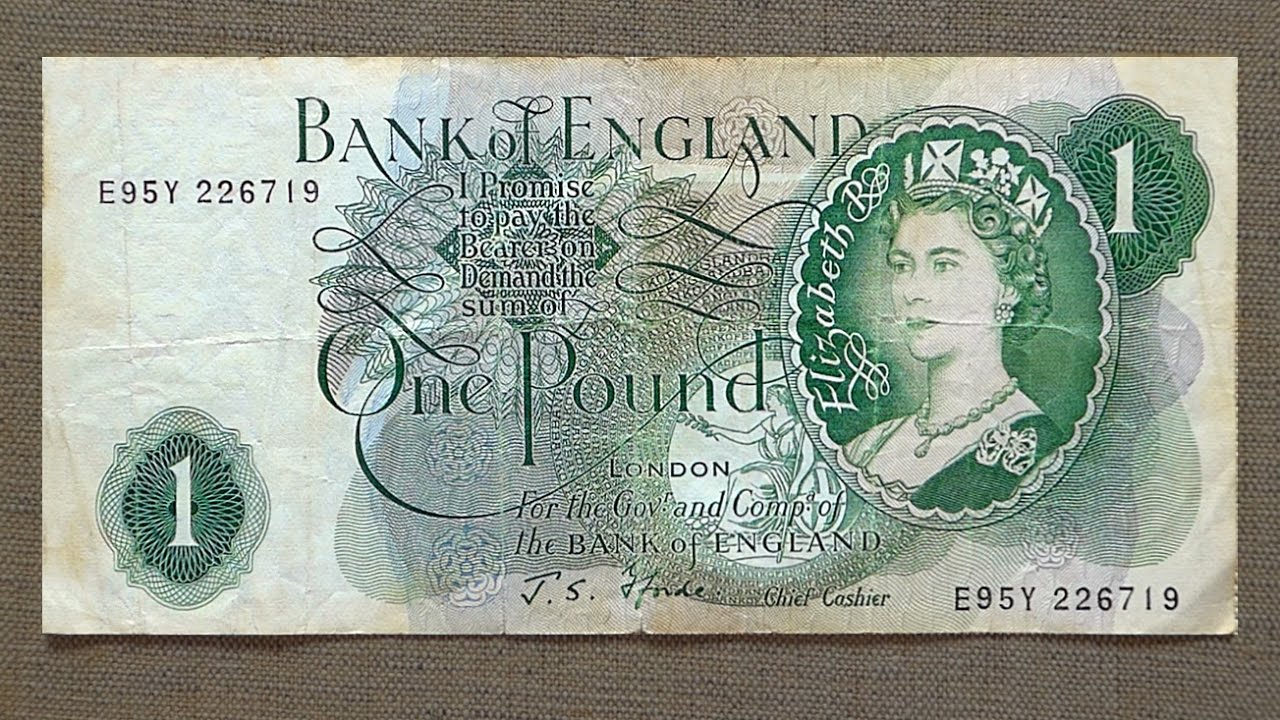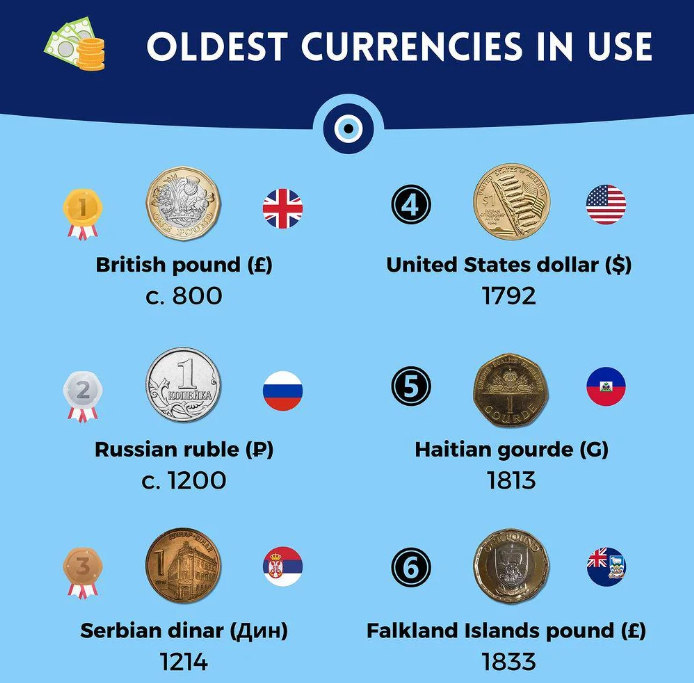Currencies are more than just tools for trade-they are living pieces of history, carrying stories of empires, revolutions, and evolving societies. While many currencies have come and gone, a select few have stood the test of time and remain in circulation today.
In this article, we explore the top five oldest currencies in the world, tracing their origins, evolution, and enduring significance.
5 Oldest Currencies in the World

1. British Pound Sterling (UK)
Introduced: c. 8th century (around 775–800 AD)
The British pound sterling (£), often simply called the pound, is the world's oldest currency still in use. Its origins date back to Anglo-Saxon England, when silver pennies were first minted. The term “pound” originally referred to a pound weight of silver, and by the 12th century, it became the official currency under King Henry II.
Over more than 1,200 years, the pound has weathered wars, economic crises, and the rise and fall of the British Empire. Today, it remains the official currency of the United Kingdom and several British territories, and is the fourth most-traded currency globally.
Did you know?
The pound's symbol (£) comes from the Latin word “libra,” meaning scales or balance, reflecting its origins in weight-based trade.
2. Serbian Dinar (Serbia)
Introduced: 1214 AD
The Serbian dinar (RSD) is the second-oldest currency still in circulation, first introduced in 1214 by King Stefan Nemanjić. The dinar's name is derived from the Roman denarius, and it has been used throughout various periods of Serbian history, surviving medieval kingdoms, Ottoman rule, and the formation and dissolution of Yugoslavia.
The modern Serbian dinar has been reissued several times, but its lineage remains unbroken, making it a remarkable survivor in the world of money.
Did you know?
The dinar's enduring presence is a testament to Serbia's rich and often turbulent history in the heart of the Balkans.
3. Russian Ruble (Russia)
Introduced: 13th century (c. 1200s)
The Russian ruble (₽) traces its roots back to the 13th century, making it the third-oldest currency still used today. Originally, the ruble referred to a cut piece of silver known as a “rubit,” meaning “to chop.”
Over centuries, the ruble evolved from a medieval silver bar to the official currency of the Russian Empire, the Soviet Union, and now the Russian Federation. Despite political upheavals and economic reforms, the ruble has maintained its place in Russian life for over 700 years.
Did you know?
The ruble was the world's first decimal currency, divided into 100 kopecks since the 18th century.
4. United States Dollar (USA)
Introduced: 1785 AD
The United States dollar ($) may not be as ancient as the pound or ruble, but it is the oldest currency in continuous use in the Americas and one of the most influential globally. Officially adopted in 1785, the dollar's design was inspired by the Spanish dollar, which circulated widely in colonial America.
Today, the US dollar is the world's most traded and widely held reserve currency, symbolising economic power and stability.
Did you know?
The US dollar was the first currency to use the dollar sign ($), which is believed to have originated from the Spanish peso's abbreviation “Ps.”
5. Haitian Gourde (Haiti)
Introduced: 1813 AD
The Haitian gourde (HTG) rounds out the top five oldest currencies still in circulation. Introduced in 1813, just a decade after Haiti gained independence from France, the gourde has survived political upheaval, economic challenges, and currency reforms.
Its name comes from the Spanish “gordo,” meaning “fat,” a reference to the thick Spanish coins that once circulated in the Caribbean.
Did you know?
The gourde has been revalued several times, but remains the official currency of Haiti, reflecting the country's resilience and unique history.
Why Do These Currencies Endure?
The longevity of these currencies is rooted in their adaptability and the resilience of the nations that issue them. Each has evolved through changing political regimes, economic systems, and even technological revolutions, yet remains a symbol of national identity and continuity.
Honourable Mentions

Other currencies with long histories include the Falkland Islands pound (introduced 1833), Dominican peso (1844), Swiss franc (1850), Canadian dollar (1871), and Japanese yen (1871). While not as old as the top five, they are still among the world's oldest currencies in continuous use.
Conclusion
The top five oldest currencies in the world-the British pound, Serbian dinar, Russian ruble, US dollar, and Haitian gourde-offer a fascinating glimpse into the endurance of money and the history of civilisation.
Their stories remind us that currency is more than a medium of exchange; it is a living link to our shared past.
Disclaimer: This material is for general information purposes only and is not intended as (and should not be considered to be) financial, investment or other advice on which reliance should be placed. No opinion given in the material constitutes a recommendation by EBC or the author that any particular investment, security, transaction or investment strategy is suitable for any specific person.








